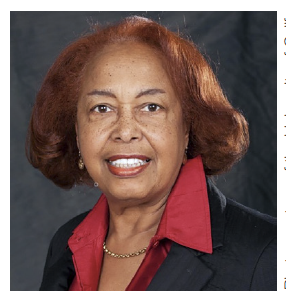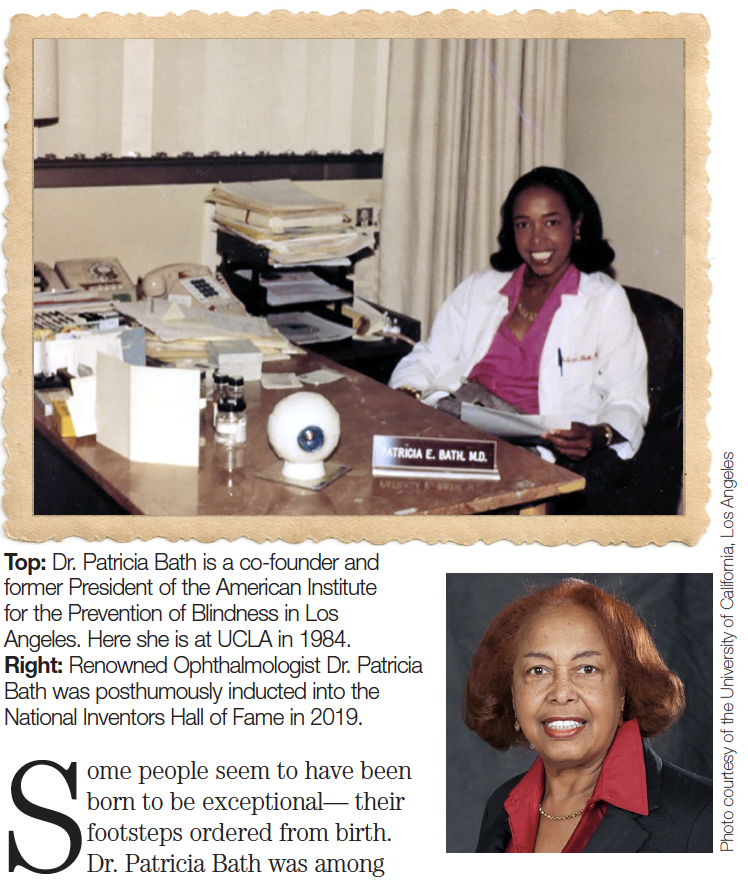
First Black Woman to Be Inducted into the National Inventors Hall of Fame

By Sonja Whitemon
Some people seem to have been born to be exceptional— their footsteps ordered from birth. Dr. Patricia Bath was among those seemingly destined for greatness. A legend in science and medicine, she broke barriers and saved sight for people around the world. Born in 1942, she showed an early aptitude for science. She pursued her calling and pushed through the familiar patterns of slights and obstacles to her race and gender and became one of the leading scientists in the field of ophthalmology.
Dr. Bath passed away in 2019 at the age of 76. She will be inducted posthumously into the National Inventor’s Hall of Fame as one of the first Black women inductees. Also inducted will be Marian Croak who invented Voice over Internet Protocol (VoIP), the technology that allows voice phone calls using an Internet connection instead of a landline. This innovation makes Zoom, Skype and working from home possible for so many today. These Black women are taking their rightful ‒ though long-awaited ‒ place among such inventors as Thomas Edison, Alexander Graham Bell and The Wright Brothers.
Dr. Bath invented The Laserphaco probe and a technique that would revolutionize cataract-removal surgery, making it less invasive and reducing the length of time required for surgery. The Laserphaco probe is approved by the FDA in the United States and has been used internationally in Canada, Japan and several European countries.
Dr. Bath received her first of seven patents in the U.S. in 1988. Four of her patents were received in the U.S and she received one each in Canada, Japan and Europe.
Her impact on cataract surgery and the world cannot be overstated. According to healio.com, a news and education outlet for healthcare professionals, there are approximately four million cataract procedures performed every year in the U.S. and nearly 28 million worldwide. About 60,000 cataract procedures are performed every day globally.
Dr. Bath was a pioneer in science long before STEM became a “thing.” She holds an impressive list of firsts in science and medicine: becoming the first Black female doctor in the country to patent a medical device, first black female to receive a patent, first female faculty member at the University of California, Los Angeles (UCLA), the first woman chair of an ophthalmology residency program, and one of the first researchers to discover that glaucoma disproportionately affected Black patients.
The legacy of Dr. Bath was not just built on her intellect but also on her compassion. Early in her medical career, as an intern, she witnessed the difference in care between populations in low-income areas and those in more affluent areas. She analyzed data from state-maintained blindness registries and found that between the ages of 45 and 64 years, blindness in Black Americans was 3.6 times higher than that of White Americans. She found that glaucoma, which is relatively easy to prevent, was eight times more common as a cause of blindness in Black Americans due to the relative lack of services available to diagnose and treat diseases.
Dr. Bath met Reverend Dr. Martin Luther King, Jr. in 1963 and worked for the Poor People’s Campaign. In 1968 she organized medical students to volunteer health services during the Poor People’s Campaign in Resurrection City. She was quoted as saying, “Service to the underserved was a natural evolution of my life from my Harlem roots.”
Bath went on to co-found the American Institute for the Prevention of Blindness, which established that “eyesight is a basic human right.”
Her daughter, Dr. Eraka Bath, a psychiatrist at the Department of Psychiatry at the David Geffen School of Medicine at UCLA, said, “My mother was someone who dedicated her life to service and embodied the spirit of innovation and inquiry and scientific excellence. She was really a humanitarian first. Her approach to problems was to help others.”
In 1993, Bath retired from her position at the UCLA Medical Center and became an honorary member of its medical staff. That same year, she was named a Howard University Pioneer in Academic Medicine.
